Barberry is a useful and highly ornamental shrub - a honey plant, the seedlings of which are in demand and popular and therefore are not cheap. You can propagate barberry by cuttings yourself. To obtain several new specimens, cuttings are the most suitable and very effective method.With it, all varietal characteristics of the parent plant are completely preserved, a lot of seedlings are obtained, and after rooting they actively begin to grow.
If you are going to cut barberry, be sure to watch the video:
In the summer season, green cuttings are used to propagate barberry, and in the autumn, lignified parts of the branches are used. To obtain a positive result from the planned procedure at home, you need to know some of the subtleties and secrets of cuttings. This article offers such information in detail.
Propagation of barberry by green cuttings in summer
To root the seedlings, you will need a tall box with drainage holes and two types of soil. A light fertile mixture is poured up to half the container, and a substrate of equal parts of peat, sand and perlite is poured on top, and watered generously. A mini-greenhouse will need to be installed above the plantings.
Requirements for cuttings
Cuttings are cut in early June. From annual growths, take the middle part with a diameter of five to six millimeters and a length of about ten to twelve centimeters with two to three internodes. At the bottom, the foliage is completely removed, and at the top it is shortened by half. The lower cut is treated with a growth stimulator (in the form of a powder or solution). You can use "Kornevin", "Zircon" or "Heteroauxin".
Planting technology and maintenance conditions
At an angle of forty-five degrees, the cuttings are buried one to two centimeters into the prepared moist substrate and covered with a constructed mini-greenhouse. For complete rooting, it is necessary to maintain high humidity (about 90%) and a temperature of at least twenty-two degrees.
|
Containers with barberry cuttings should be located in a room with diffused lighting. |
Care
Over the course of one to one and a half months, the cuttings grow their roots. Throughout this period, plants require regular moderate moisture (spraying) and daily ventilation. Rooting is considered successful if new leaves appear on the seedlings. After this, they are transplanted into individual containers with fertile soil, where they can remain until autumn or spring transplantation to open ground. Or they immediately begin to prepare for a permanent place of cultivation, carrying out daily hardening procedures.
Propagation of barberry by lignified cuttings
The technology for propagating barberry using lignified cuttings differs from propagating using green cuttings. If green cuttings begin to root immediately after cutting, then lignified cuttings are prepared in the fall, stored in the sand in the cellar over the winter, and only in the spring do they begin to root.
Preparation of cuttings
Lignified cuttings are cut in late autumn. You can use for this purpose two-year-old shoots left after autumn pruning of bushes. It is necessary to select healthy and undamaged branches. The cut at the top of the cutting should be horizontal, and at the bottom at an acute angle.
|
The length of the seedlings is about twenty centimeters, the diameter is eight to ten millimeters. Each of them has three to four growth buds. |
Landing technology
After processing the cuts in the lower part of the seedling, planting material is buried almost completely in wet sand and kept in a cool room with a temperature of about three to five degrees Celsius until spring arrives.
In spring, planting material is planted in open ground (covered with a cut plastic bottle) or in a small greenhouse. When planting, it is very important that the cuttings are buried at an angle.In this case, the two upper buds are left above the surface of the soil, and the lower ones are immersed in the ground. New shoots will grow from the top ones, and roots will form from the bottom ones.
Caring for cuttings
It is very important that the soil does not dry out, otherwise the cuttings may die. By the end of summer, rooted seedlings will have two to three young shoots. Such plants are ready to be transplanted to a permanent site. Basic care consists of timely moistening the soil, spraying the seedlings and loosening the substrate.
Another video about propagating shrubs by cuttings:
It must be said that when propagated by lignified cuttings, the results are worse than with summer cuttings.
Planting rooted seedlings in open ground
Landing dates
Rooted seedlings are transferred to a permanent growing location in spring or autumn. Favorable periods for planting are from the twentieth of March to the tenth of April or from the fifteenth of September to the tenth of October. Autumn planting is considered more effective, since before spring the plants will have time to adapt to their new location. They will devote all their strength to survival. When planting in spring, it will be more difficult for crops, since they need strength not only to survive and restore the root system, but also to flower.
Site selection and preparation
It is recommended to plant rooted barberry cuttings in open, windless areas with bright or diffuse lighting; you can use areas along buildings or fences, near other plant crops. The soil should be slightly acidic or slightly alkaline, fertile, loose, or possibly loamy. Groundwater must lie at great depth.
|
Rooted barberry cuttings |
Preparing the planting hole
The width and depth of the planting hole is at least forty centimeters. The soil extracted from it is mixed with compost, humus, peat, potassium-phosphorus fertilizers (according to the manufacturer's recommendations) or wood ash. A drainage layer of crushed red brick is poured onto the bottom, followed by a small amount of sand and the prepared soil mixture in a mound. When planting several plants, the distance between plantings is from forty centimeters (to create a hedge) to two meters.
Landing scheme and features
A seedling is placed on an earthen mound, the roots are carefully straightened, sprinkled with soil and watered abundantly. When the water is absorbed and the earth settles a little, add a little more soil and apply a mulch layer. You can use fallen leaves or sawdust as mulch.
|
Planting a young bush in open ground |
Rules for caring for plants
Young plants in the first two years need additional shelter for the winter months. Further care for young crops consists of standard procedures.
- The drought-resistant shrub needs watering only in the absence of natural precipitation for a long time. During such periods, water it moderately, since excess moisture is undesirable.
- Fertilizers are applied starting from the second or third year after planting (depending on the nutritional value of the soil). In spring, shrubs require fertilizing containing nitrogen, and in early autumn - with potassium and phosphorus.
- Sanitary pruning is carried out once every three to four years. It is recommended to carry out a shaping haircut at the beginning or end of the summer season.
- In spring and early summer, it is necessary to carry out preventive treatment against possible diseases and pests, using various organic infusions and decoctions.
If you follow all the rules and nuances of cuttings, propagating barberry in this way is not difficult and anyone can do it. This will significantly save the family budget, especially when planning to plant a hedge or landscaping a large plot of land that requires a large number of expensive seedlings. And abundant flowering and fruiting is possible only with proper care at each stage of plant crop development.
Other articles about growing barberry:
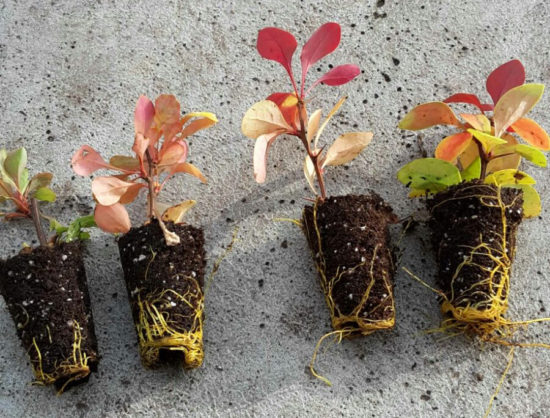
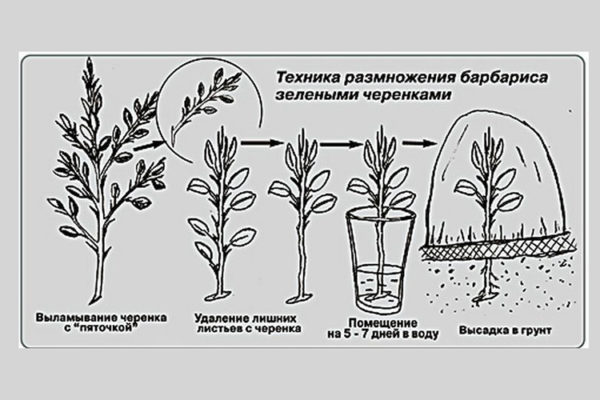
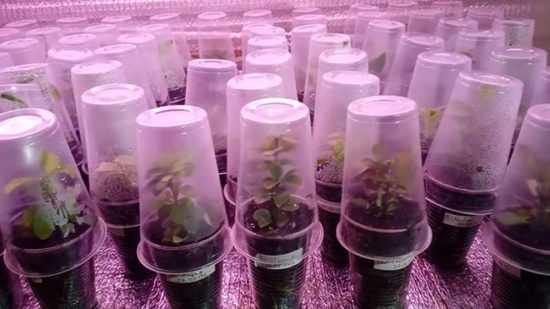
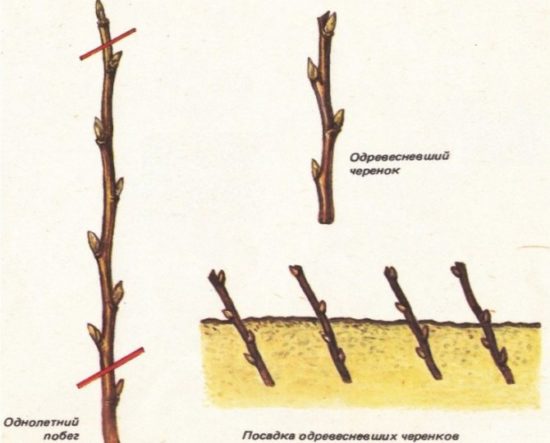
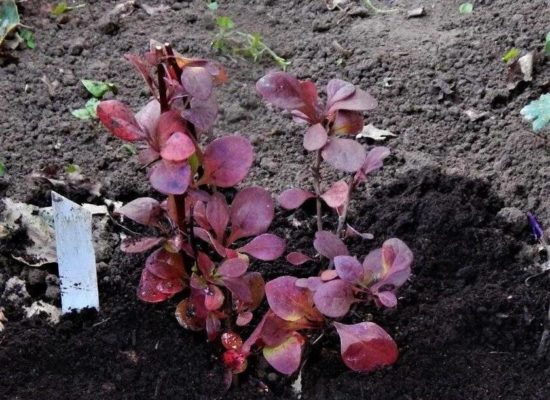

 CUCUMBERS NEVER GET SICK, I'VE BEEN USING ONLY THIS FOR 40 YEARS! I SHARE A SECRET WITH YOU, CUCUMBERS ARE LIKE THE PICTURE!
CUCUMBERS NEVER GET SICK, I'VE BEEN USING ONLY THIS FOR 40 YEARS! I SHARE A SECRET WITH YOU, CUCUMBERS ARE LIKE THE PICTURE! You can dig a bucket of potatoes from each bush. Do you think these are fairy tales? Watch the video
You can dig a bucket of potatoes from each bush. Do you think these are fairy tales? Watch the video
 How our fellow gardeners work in Korea. There is a lot to learn and just fun to watch.
How our fellow gardeners work in Korea. There is a lot to learn and just fun to watch. Eye trainer. The author claims that with daily viewing, vision is restored. They don't charge money for views.
Eye trainer. The author claims that with daily viewing, vision is restored. They don't charge money for views. A 3-ingredient cake recipe in 30 minutes is better than Napoleon. Simple and very tasty.
A 3-ingredient cake recipe in 30 minutes is better than Napoleon. Simple and very tasty. Therapeutic exercises for cervical osteochondrosis. A complete set of exercises.
Therapeutic exercises for cervical osteochondrosis. A complete set of exercises. Which indoor plants match your zodiac sign?
Which indoor plants match your zodiac sign? What about them? Excursion to German dachas.
What about them? Excursion to German dachas.